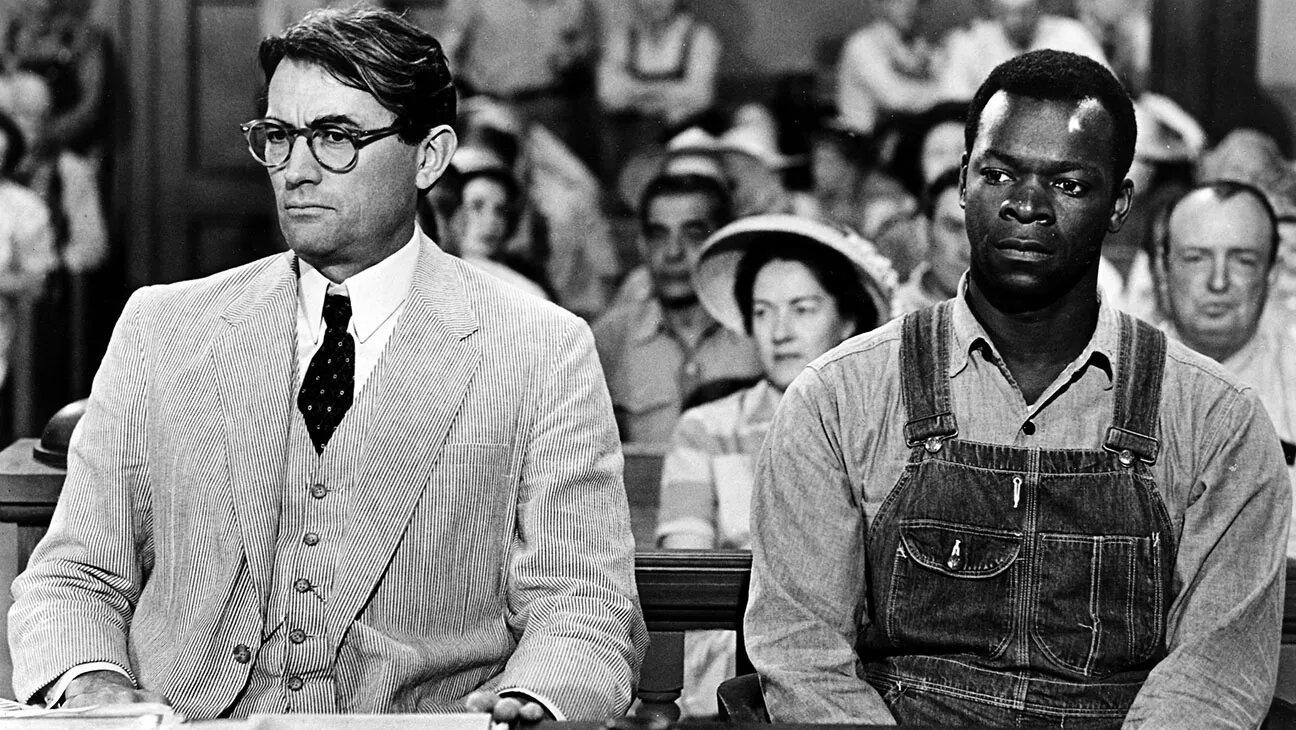Created by Colin Schroyer on Sat, 05/04/2024 - 18:35
Description:
The United States, during the early to mid 20th-century, underwent a period of social progress as legislation developed to finally bring racial equality in a time when racial tension was at a high. Scholar Geraldine N. Phillips, in her article "Documenting the Struggle for Racial Equality in the Sixties," describes the cultural background of the era: "The struggle for racial equality in the United States of America in the 1960s extended across the nation and was waged from segregated lunch counters to the bar of the United States Supreme Court. It had an impact on every aspect of American life" (Phillips). Though efforts were being made to break these tensions, the time period was still rife with strife and conflict.
It was at the apotheosis of these rising racial tensions, the Civil Rights movement, and the continuing waves of legislature to desegregate the United States that Harper Lee published To Kill A Mockingbird, a literary classic known for its accurate, yet innocent, portrayal of racism and bias. Robert O. Stephens describes the novel in "The Law and the Code in Harper Lee's 'To Kill A Mockingbird'" how, "The time of Mockingbird is the same as that of the Scottsboro trials of 1931 and 1933 in which nine black youths were convicted of raping a white woman, also in Alabama, and the book was published in 1960 in the midst of massive resistance to desegregation of schools after the Supreme Court decision on Brown v. Board of Education in 1954" (Stevens 217).
Telling the story from the perspective of Jean Louise "Scout" Finch, To Kill A Mockingbird reveals racial bias as Scout's father, Atticus Finch, is appointed to defend Tom Robinson, a black man, of a crime he was wrongfully accused of committing. Scout surmises the town's implicit racism as she recognizes their distain for Atticus when he defends Robinson: "He had to, that’s why he was doing it, equaled fewer fights and less fussing. But did that explain the town’s attitude? The court appointed Atticus to defend him. Atticus aimed to defend him. That’s what they didn’t like about it. It was confusing." (Lee). In many ways, while the town may not undergo progress of breaking their corrupted judgement, the novel presents a coming-of-age tale for someone who can, someone gifted with a compassionate heart and the good will of an upstanding father who does what is right in the face of adversity. The image is a frame from the renowned 1962 film adaptation of the novel; this particular frame is from the courtroom scene just quoted, with Gregory Peck portraying Atticus Finch and Brock Peters as Tom Robinson. Atticus Finch far and away steals the show as the moral center of the story, establishing a firm foundation of equality and justice for Scout in the face of corruption and perpetuated biases that had likely plagued their little town.
To Kill A Mockingbird, both through its impeccable story of growth and and its legacy as a classroom staple, has become a de facto work encapsulating the cultural progress in breaking boundaries, especially in the era of desegregation.
Works Cited:
Lee, Harper. To Kill A Mockingbird, McIntosh and Otis, Inc., 1960, https://www.raio.org/TKMFullText.pdf. Accessed 4 May 2024.
Phillips, Geraldine N. "Documenting the Struggle for Racial Equality in the Decade of the Sixties." Federal Records and African American History, vol. 29, no. 2, Summer 1997. National Archives, https://www.archives.gov/publications/prologue/1997/summer/equality-in-t.... Accessed 5 May 2024.
Stephens, Robert O. “The Law and the Code in Harper Lee’s ‘To Kill a Mockingbird.’” Southern Cultures, vol. 1, no. 2, 1995, pp. 215–27. JSTOR, http://www.jstor.org/stable/44378647. Accessed 5 May 2024.
To Kill A Mockingbird. Directed by Robert Mulligan, Universal Pictures, 1962.


